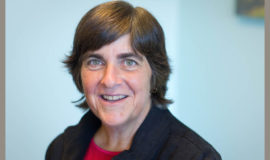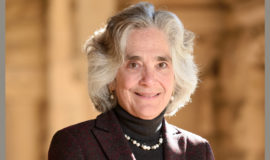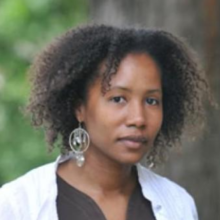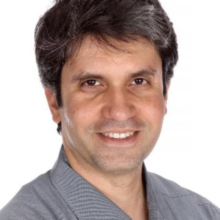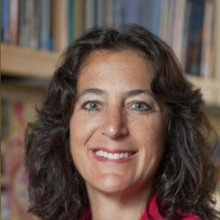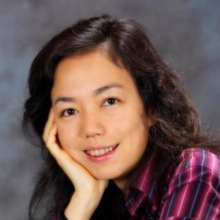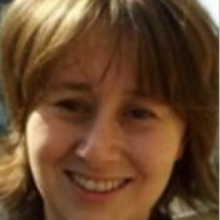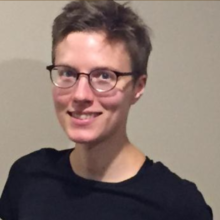An Academic Career Workshop for Women
- Stanford University
- Nov. 5-7, 2017
This workshop brings top graduate and postdoc women in EECS together for scientific discussions and informal sessions aimed at navigating the early stages of an academic career.
There will be research presentations, panel discussions, sessions on interviewing and promotion, and time for 2017 participants to get to know each other and form lasting connections.
Applications for 2017 are closed.
LOOKING FOR RISING STARS 2018?
risingstars.mit.edu
*NEW* MIT's Application Deadline: May 15, 2018 (12:00 PDT)
MIT's Rising Stars Workshop 2018: October 28-30, 2018
-
April 16, 2017 Rising Stars 2017
We are proud to host the best and brightest women in electrical engineering and...
-
April 14, 2017 Rising Stars 2017
The value of networking, mentoring, and role models cannot be underestimated. Rising Stars brings...
-
April 2, 2017 Rising Stars 2017
Non-traditional from the time of its founding, Stanford’s first class of students in 1891...
-
March 1, 2017 Rising Stars 2017
We are very pleased to welcome you to Stanford for the Rising Stars Workshop....
Location
- Address
- David Packard Electrical Engineering
350 Jane Stanford Way
Stanford, CA - risingstars2017@stanford.edu
- Phone
- 650-724-1080
Schedule
-
Day OneWelcome Dinner
-
Day TwoMonday, November 6
-
08:00AM - 09:00AMCheck-In & Breakfast Mixer
-
 09:00AM - 09:15AMWelcome RemarksJoin Provost Persis Drell to kickoff the first full day of Rising Stars 2017! Provost Drell received her bachelor’s degree in mathematics and physics from Wellesley College in 1977, followed by a PhD in atomic physics from the University of California, Berkeley, in 1983. She then switched to high-energy experimental physics and worked as a postdoctoral scientist at the Lawrence Berkeley National Laboratory.
09:00AM - 09:15AMWelcome RemarksJoin Provost Persis Drell to kickoff the first full day of Rising Stars 2017! Provost Drell received her bachelor’s degree in mathematics and physics from Wellesley College in 1977, followed by a PhD in atomic physics from the University of California, Berkeley, in 1983. She then switched to high-energy experimental physics and worked as a postdoctoral scientist at the Lawrence Berkeley National Laboratory.
Session Video -




 9:15AM - 10:15AMPanel on Career Trajectories
9:15AM - 10:15AMPanel on Career Trajectories -
 10:15AM - 11:15AMPart 1 of 3: Getting a faculty job
10:15AM - 11:15AMPart 1 of 3: Getting a faculty job -
11:15AM - 11:30AM- Break -
-




 11:30AM - 12:30PMPanel with junior women facultyPanelists: Emma Brunskill, Mary Wootters, Ayfer Ozgur, Stefanie Mueller, Rikky Muller.
11:30AM - 12:30PMPanel with junior women facultyPanelists: Emma Brunskill, Mary Wootters, Ayfer Ozgur, Stefanie Mueller, Rikky Muller.
Session Video -




 12:30PM - 01:30PMPart 2 of 3: Getting a faculty job, lunch panelPart 2:
12:30PM - 01:30PMPart 2 of 3: Getting a faculty job, lunch panelPart 2:
Creating a winning application
Moderator: Moses Charikari
Panelists: Boris Murmann, Claire Tomlin, Kathy Yelick, and Kunle Olukotun. All panelists in this session are chairing their department's Faculty Search Committee.
Session Video -
01:30PM - 01:45PM- Break -
-
 01:45PM - 02:30PMLightning Talks 1
01:45PM - 02:30PMLightning Talks 1
(EE focus)Lightning Talks 1 will have an EE focus. Chair: Andrea Goldsmith
Titles and participants in lightning talks 1. -
02:30PM - 03:30PMPoster session 1
(EE focus) -
 3:30PM - 4:30PMPart 3 of 3: Getting a faculty job
3:30PM - 4:30PMPart 3 of 3: Getting a faculty job -





 04:30PM - 05:30PMPanel of senior EECS women faculty“What I would tell a younger me"
04:30PM - 05:30PMPanel of senior EECS women faculty“What I would tell a younger me"
Moderator: Fei-Fei Li
Panelists: Monica Lam, Jelena Vuckovic, Daphne Koller, Tsu-Jae King, Kathy Yelick.
Session Video -

 6:00PM - 9:00PMBanquet dinner at Bing Concert HallReception, 6-7pm; Dinner, 7-9pm Opening remarks by Dean Jennifer Widom (Indiana University, Cornell University). She is the Frederick Emmons Terman Dean of the School of Engineering and the Fletcher Jones Professor in Computer Science and Electrical Engineering.
6:00PM - 9:00PMBanquet dinner at Bing Concert HallReception, 6-7pm; Dinner, 7-9pm Opening remarks by Dean Jennifer Widom (Indiana University, Cornell University). She is the Frederick Emmons Terman Dean of the School of Engineering and the Fletcher Jones Professor in Computer Science and Electrical Engineering.We are pleased to welcome Telle Whitney to the 2017 Rising Stars. Telle is CEO at Anita Borg Institute for Women and Technology.
-
-
Day ThreeTuesday, November 7
-
08:00AM - 09:00AMBreakfast Mixer
-
 09:00AM - 10:00AMPart 1 of 2: How to be successful as an Assistant Professor
09:00AM - 10:00AMPart 1 of 2: How to be successful as an Assistant Professor -
 10:00AM - 10:45AOvercoming challenges, getting mentoring, and finding a networkSpeaker: Carol Muller
10:00AM - 10:45AOvercoming challenges, getting mentoring, and finding a networkSpeaker: Carol Muller -
10:45AM - 11:00AM– Break –
-
 11:00AM - 11:45AMLightning Talks 2
11:00AM - 11:45AMLightning Talks 2
(CS focus)Lightning Talks 2 will have a CS focus. Chair: James Landay
Titles and participants in lightning talks 2. -
11:45AM - 12:45PMPoster session 2
(CS focus) -
12:45PM - 02:00PMLunch with EECS facultyJoin faculty outside for an informal lunch in the Packard Grove, between Gates & Packard Buildings.
-




 02:00PM - 03:00PMPart 2 of 2: How to be successful as an Assistant ProfessorPart 2:
02:00PM - 03:00PMPart 2 of 2: How to be successful as an Assistant ProfessorPart 2:
Balancing research, teaching, service, networking, and work-life
Moderator: Ayfer Ozgur
Panelists: Emma Brunskill, Juan M. Rivas Davila, Dorsa Sadigh, and Sarah Swisher.
Session Video -
03:00PM - 03:15PM– Break –
-
 03:15PM - 04:00PMLightning talks 3 (Interdisciplinary focus)Lightning talks 3 will have an interdisciplinary focus. Chair: Debbie Senesky
03:15PM - 04:00PMLightning talks 3 (Interdisciplinary focus)Lightning talks 3 will have an interdisciplinary focus. Chair: Debbie Senesky
Titles and participants in lightning talks 3. -
04:00PM - 05:00PMPoster session 3
(Interdisciplinary focus) -


 05:00PM - 05:30PMClosing remarks and feedbackStephen Boyd (Harvard, UC Berkeley)
05:00PM - 05:30PMClosing remarks and feedbackStephen Boyd (Harvard, UC Berkeley)
Moses Charikar (IIT, Stanford)
Andrea Goldsmith (UC Berkeley)
Session Video -
05:30PMFarewell reception, Packard Atrium
-
Rising Stars at Stanford
We are very pleased to welcome you to Stanford for the Rising Stars Workshop. Increasing diversity in computer science and electrical engineering is among our most urgent and important initiatives. It is not only the right thing to do, it is critical to what we are trying to achieve as a university and in finding solutions to the complex problems we tackle every day. It is critical to our success!

We are proud to host the best and brightest women in electrical engineering and computer science for the 2017 Rising Stars workshop. As the future leaders of our profession, we look forward to hearing about your accomplishments and aspirations, and to providing guidance on navigating the journey to obtain and be successful in an academic job. We promise you a lively and fun workshop on the Farm that will inspire and inform the next steps in your careers.

The value of networking, mentoring, and role models cannot be underestimated. Rising Stars brings together women who have a shared interest in CS and EE, and shared career goals and aspirations. Rising Stars is sure to deliver both a-ha moments and relationships that last a lifetime. For any CS or EE woman in or aspiring to an academic career, this event is not to be missed.

Non-traditional from the time of its founding, Stanford’s first class of students in 1891 was fully coeducational. Today, 126 years later, we remain fully committed to Jane and Leland Stanford’s vision of education and research to render the greatest possible service to humankind. In this spirit, we are pleased to host the 2017 Rising Stars workshop, a gathering of some of the best and brightest women scientists in EE and CS who are interested in academic careers.
We look forward to learning about your research, interests and perspectives and sharing our academic career experiences with you. Enjoy your time at Stanford, and in the words of Stanford’s new president, Marc Tessier-Lavigne, “Let us be fearless.”

Copyright © 2017. All Rights reserved Designed by WPlook

